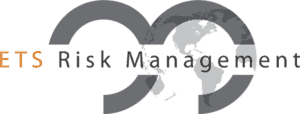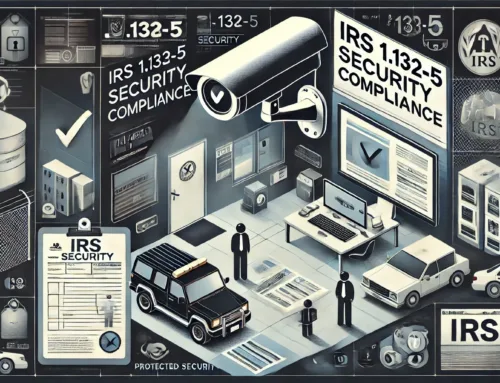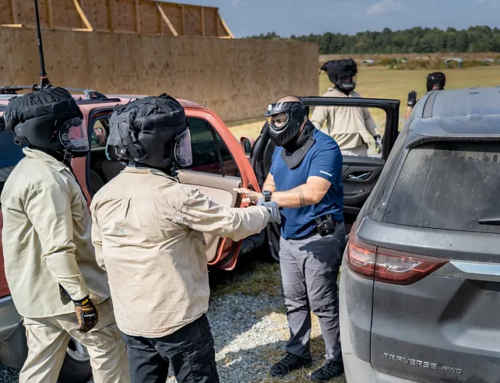
Implications for Businesses, High-Profile Individuals, and Event Management
In his recent speech, MI5 Director General (DG) Ken McCallum provided a sobering assessment on the evolving threat landscape facing the UK and its international allies. McCallum’s remarks highlighted growing concerns around terrorism, espionage, and cyber-attacks, with an emphasis on how these threats are increasingly global, unpredictable, and intertwined with state and non-state actors.
His insight should be of interest to organizations engaged in international operations. Although focused on the UK, everything discussed transcends borders and is aligned with what the USA is currently experiencing or will likely see in 2025.
Over the next few paragraphs, this article breaks down McCallum’s speech and works to identify what it may mean for organizations and how it could be broken down into actionable consideration points. At ETS Risk Management, we specialize in helping businesses, executives, and high-profile individuals navigate security risks, working with clients to understand the threat landscape and support business operations.
Protecting At-Risk Individuals: Targeted Threats and Tailored Security Solutions
McCallum emphasized the persistent threat of terrorism, particularly from non-state actors and foreign intelligence services targeting individuals and organizations alike. Notably, there has been an alarming surge in Iran-backed assassination plots, employing criminal networks as proxies, thereby complicating the security landscape. High-profile individuals—especially those in politically sensitive or influential business roles—are increasingly at risk. Whether from terrorists, foreign intelligence agencies, or organized crime, understanding the nuances of these threats is essential.
Key Considerations
- Layered Protection Plans: Incorporating multiple layers of security, such as physical protection, secure communications, and intelligence-led operations, ensures a robust defense against emerging threats.
- Proactive Risk Management: Organizations should adopt a forward-looking security posture, integrating comprehensive threat assessments into routine security protocols for executives and other high-risk individuals. The DG’s update highlighted the importance of understanding the dynamic threat landscape, including both direct and indirect threats
- Custom, Updated Risk Assessments: Organizations should conduct personalized risk assessments to determine the specific vulnerabilities of at-risk individuals. This includes evaluating their travel, residences, public visibility, social media activity, and the geopolitical environment of their destination/s. Liaison with Law enforcement and federal agencies should be initiated where possible.
- Consider Targeted Vs. Non-targeted Threats: Do not solely focus on direct threats; consider the range of non-targeted, indirect threats that could increase risk. Who will be co-attending events, will there be proximity to at-risk individuals, or locations.
- Executive Protection : Once the threats are identified and risks understood, organizations should align executive protection, special event security, and travel risk management to appropriate C-Suite.
- Secure Communications: Working to maintain privacy around itineraries and leveraging secure communication channels for sensitive information.
- 24/7 Monitoring and Response: By leveraging real-time intelligence, businesses can adjust security protocols based on evolving threats. The threat landscape can change quickly, but often there are ‘trip-wires’ to help get ahead of potential problems.
Special Event Security
Events that attract large numbers of people, particularly those with high-profile attendees or significant media attention, remain key targets for terrorist attacks and security breaches. The DG’s warning of the ongoing threat of terrorism should prompt event organizers to revisit security planning and potentially enhance their security protocols.
Key Takeaways for Special Event Security:
- Comprehensive Security Planning: Special events require meticulous security planning that involves threat identification, crowd management, entry point security, and emergency response strategies. The continued risk of rudimentary lone wolf attacks has made securing large gatherings more challenging.
- Threat Detection: Think back to the Manchester Arena Suicide attack in 2017, and the myriad of security failures involved. Effective threat detection, surveillance and improved security awareness are key. It is easy for complacency to creep in, especially as there has not been a high-level terrorism attack on US soil for many years. Leverage special event security experts to discuss ever-developing threats, terrorist modus operandi, and systems (physical and technical) to help manage the risk.
- Professional threat Assessments: Every event should have a threat assessment completed during the early stages of planning. It is important that the assessment is undertaken by a security professional not through the lens of a production company. Before the Oct 1st 2017 Route 91 Las Vegas shooting, event risk assessments rarely accounted for counter-sniper teams. Before the Ukraine war large events were not looking at counter-drone planning from a physical security perspective. It is vital to keep on top of emerging threats.
- Contingency Planning: Solid command and control, interoperability, and communication make the difference in incident response. Robust incident response procedures and emergency protocols are essential for responding to unexpected security incidents. This includes evacuation procedures, medical response plans, and crisis communication strategies to manage the aftermath of an incident.
The Event security industry is slowly changing for the better. It is no longer solely focused on controlling access and ensuring crowd management; it’s about creating a secure environment in the face of complex, evolving threats. McCallum’s remarks reinforce the need for a layered approach to event security, incorporating intelligence, technology, and physical security measures.
Interesting Times Ahead
Ken McCallum’s recent insights highlight just how crucial it is for businesses, high-profile individuals, and event planners to stay ahead of the ever-changing threat landscape. For at-risk individuals and organizations, it’s all about having layered protections in place—think physical security, secure communication, and real-time monitoring. Accurate threat assessments are particularly vital, as they help identify specific vulnerabilities and guide tailored security measures. By understanding the unique risks they face, organizations can prioritize their efforts and allocate resources more effectively. Event organizers need to be especially diligent, focusing on detailed security planning and engaging professionals for thorough threat assessments to ensure everyone’s safety.
About ETS Risk Management
ETS Risk Management helps clients to navigate risk with agility, global insight, and a commitment to simplification. Founded in the USA in 2012, our journey has been driven by a vision to offer bespoke global security solutions that resonate deeply with corporations, family offices, and VIPs.
Our mission is to navigate and mitigate risks in an ever-evolving global landscape, offering services that are as responsive and adaptable as they are comprehensive. This core principle of agility enables us to meet the nuanced needs of our clients, providing protective services and risk management solutions with precision and personalized attention






